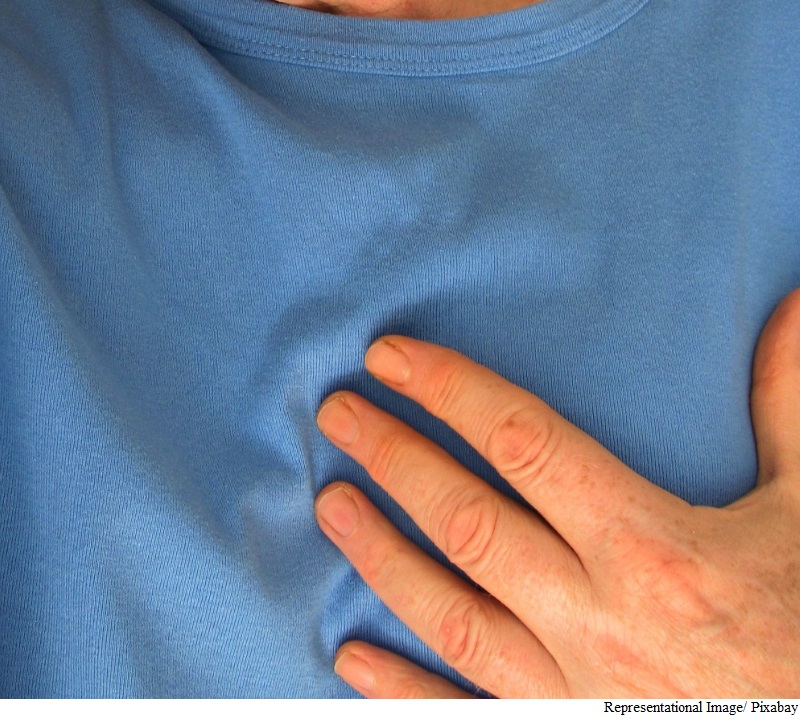New Smartphone App to Help Cardiac Arrest Victims

The earlier bystanders can deliver shocks with an automated external defibrillator (AED) to people who have cardiac arrest outside the hospital, the better their chances are for survival.
Although it may be difficult to find community-based AEDs, the new smartphone application helps connect rescuers with lifesaving AEDs and victims with sudden cardiac arrest.
Researchers from Kyoto University in Japan developed the app, called AED-SOS, which signals potential co-rescuers in communities when an out-of-hospital cardiac arrest occurs.
Co-rescuers then deliver the needed AEDs to the scene. Researchers tested whether the app can shorten the process of finding and delivering AEDs by studying participants who were assigned to either an AED-SOS group or a group without the app.
Both groups participated in scenarios involving mock out-of-hospital cardiac arrests.
Researchers found that among the 52 people they analysed, the time from recognition of the out-of-hospital cardiac arrest to AED delivery was an average 133.6 seconds in the AED-SOS group, versus 202.2 seconds in the group without the app.
Shortening the time bystanders recognise out-of-hospital cardiac arrest to when they deliver shocks with AEDs could increase survival, researchers said.
The study was presented at the American Heart Association's Scientific Sessions 2015 in US.
For the latest tech news and reviews, follow Gadgets 360 on X, Facebook, WhatsApp, Threads and Google News. For the latest videos on gadgets and tech, subscribe to our YouTube channel. If you want to know everything about top influencers, follow our in-house Who'sThat360 on Instagram and YouTube.
Related Stories
- Samsung Galaxy Unpacked 2025
- ChatGPT
- Redmi Note 14 Pro+
- iPhone 16
- Apple Vision Pro
- Oneplus 12
- OnePlus Nord CE 3 Lite 5G
- iPhone 13
- Xiaomi 14 Pro
- Oppo Find N3
- Tecno Spark Go (2023)
- Realme V30
- Best Phones Under 25000
- Samsung Galaxy S24 Series
- Cryptocurrency
- iQoo 12
- Samsung Galaxy S24 Ultra
- Giottus
- Samsung Galaxy Z Flip 5
- Apple 'Scary Fast'
- Housefull 5
- GoPro Hero 12 Black Review
- Invincible Season 2
- JioGlass
- HD Ready TV
- Laptop Under 50000
- Smartwatch Under 10000
- Latest Mobile Phones
- Compare Phones
- Moto G15 Power
- Moto G15
- Realme 14x 5G
- Poco M7 Pro 5G
- Poco C75 5G
- Vivo Y300 (China)
- HMD Arc
- Lava Blaze Duo 5G
- Asus Zenbook S 14
- MacBook Pro 16-inch (M4 Max, 2024)
- Honor Pad V9
- Tecno Megapad 11
- Redmi Watch 5
- Huawei Watch Ultimate Design
- Sony 65 Inches Ultra HD (4K) LED Smart TV (KD-65X74L)
- TCL 55 Inches Ultra HD (4K) LED Smart TV (55C61B)
- Sony PlayStation 5 Pro
- Sony PlayStation 5 Slim Digital Edition
- Blue Star 1.5 Ton 3 Star Inverter Split AC (IC318DNUHC)
- Blue Star 1.5 Ton 3 Star Inverter Split AC (IA318VKU)

















